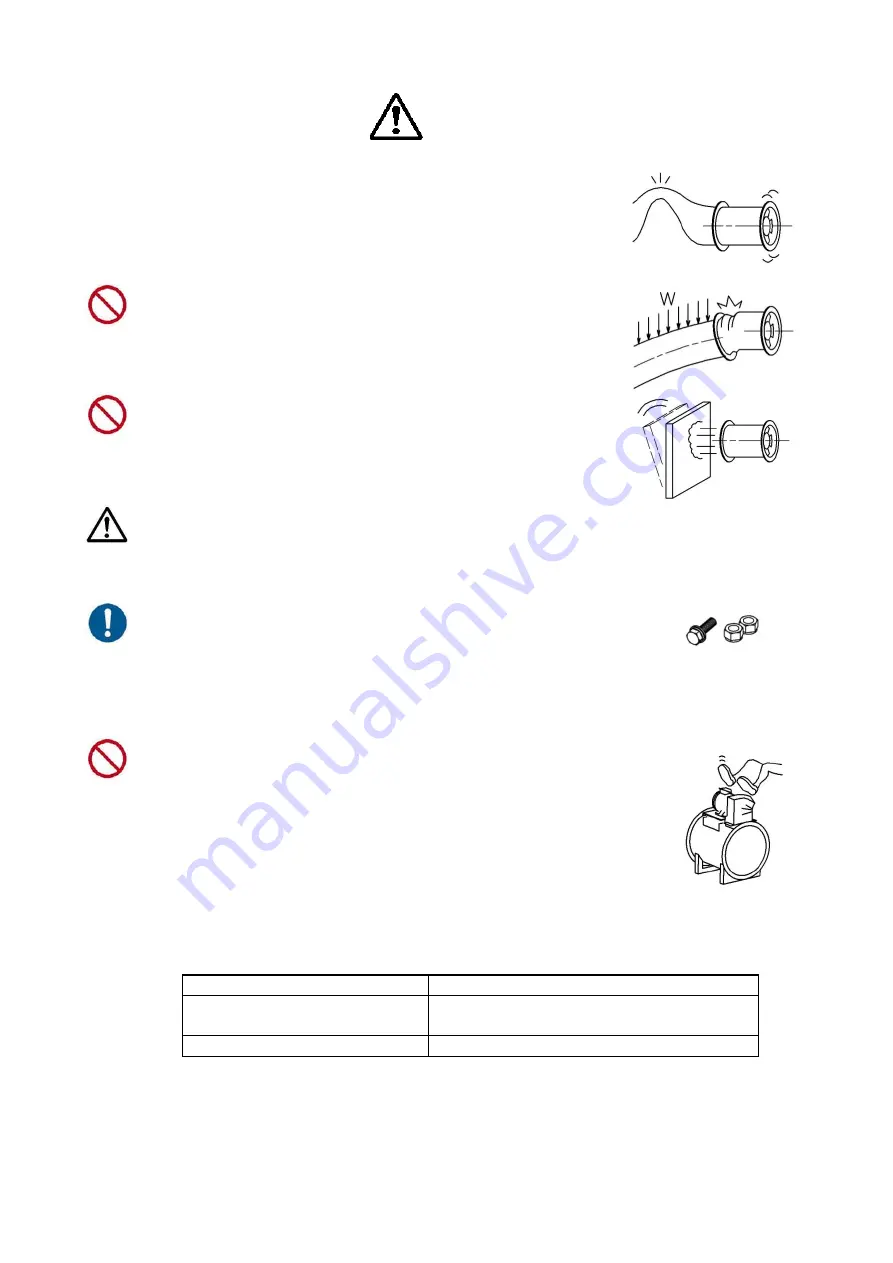
- 4 -
Caution
When installing piping, minimize the resistance to ducts,
pipes, etc., for air to flow smoothly. If the blower is operated
with the duct closed, it may enter stall operation status,
which may cause the impeller blade to generate abnormal
vibration, leading to an impeller damage accident.
Do not transfer the load of the duct to the blower.
Otherwise, deformation of the blower may cause contact
with the rotator, leading to an accident resulting in fire or
damage.
Remove the items that may turn over or fall due to vibration
or air flow pressure from around the blower and duct.
Otherwise, an accident may occur.
The wiring of the blower must be installed by a qualified
electrical engineer, as per the electrical equipment technical
standards and the extension rules. (Also refer to the
Operating Instructions of the motor.)
Before starting test operation, confirm that nothing is left in
the connected duct or casing or near the intake
port/discharge port, e.g., remaining materials, bolts, nuts,
tools, etc. Operating the blower with foreign material
remaining may cause an accident due to intake or rush-out,
or an accident resulting in damage.
Do not step on the blower. Otherwise, the blower may
deform or be damaged or a worker may fall.
The structure of the blower differs depending on the intake temperature. Operating the blower at a
temperature outside the range shown in the table below may cause deterioration of the belt, failure of
the bearing, and/or damage of the impeller.
Intake air temperature (°C)
Blower specification
-10 or more to 50 or less
Standard type (V-belt drive blower, motor
shaft direct-coupling)
50 or more to 150 or less
Heat-proof type (V-belt drive blower only)
Relative humidity of 90% or less




















